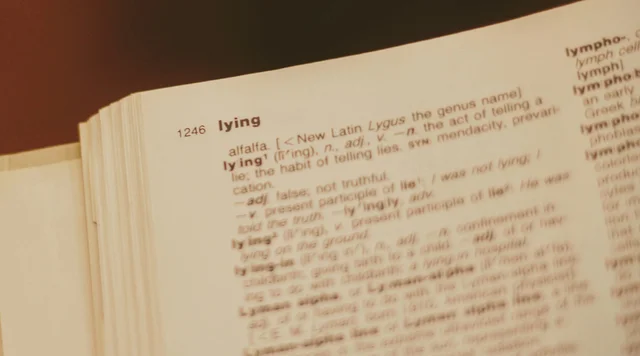
When you're drafting a brief, it can easy to get bogged down in all of the in-the-weeds counter-arguments and surrounding issues, and to kind of forget about the main point you need to make.
Years ago, in a patent case, I wound up needing to write three initial drafts of three summary judgment briefs in a week. Fun, right? The first two came together OK. The third one, not so much. It was a complicated motion involving many potential counter-arguments.
I remember thinking the initial draft was pretty good when I clicked send on the e-mail attaching it. How could it not be? In just a couple of days, I had come up with answers for everything the other side could possibly argue!
But a senior partner just responded "I'll draft this one," and started over from scratch.
Later, after the case settled, I went back and compared my initial draft to theirs. Looking at it with clear eyes, my draft was a mess. Most of what I'd written addressed counter-arguments and side issues as if the reader already understood the whole case. I flubbed the part where we actually say why the Court should grant the motion.
The replacement draft had omitted the points about counter-arguments and side issues, and instead included a longer discussion of the main issue and the case law. It was so much better. The other side didn't even end up making a lot of the points I'd tried to counter. We were lucky that we didn't file my version of that one.
Don't Forget to Say Why You Should Win
It looks like the defendant in Pfizer Inc. v. Dexcel Pharma Technologies Limited, C.A. No. 23-879-GBW-CJB (D. Del.) was not so lucky.
That case is an ANDA case involving three defendant groups. Id., D.I. 196 at 1. One group, Dexcel, stipulated to infringement. Id. The other two did not, and they have a different product.
Dexcel moved to compel access to the plaintiff's confidential infringement contentions against the other two defendant groups. Dexcel thought that plaintiff's statements those contentions might conflict with and undermine plaintiff's validity contentions against Dexcel.
The Court denied the motion. It held that the moving party simply hadn't set forth a sufficient basis for why it needed the infringement contentions:
ORAL ORDER: The Court, having reviewed Defendant Dexcel Pharma Techs. Ltd.’s (“Dexcel”) discovery dispute motion . . . , hereby ORDERS that the Motion is DENIED. With the Motion, Dexcel seeks an order that Plaintiffs must produce redacted copies of certain “Contention Documents” involving communications between Plaintiffs and Dexcel’s co-Defendants concerning the co-Defendants’ ANDAs. . . . Because the current Protective Order would otherwise prohibit the requested discovery, Dexcel needs to demonstrate good cause to support its request. . . . But in support of its Motion, Dexcel said only that it had “reason to believe” that Plaintiffs’ infringement assertions against Co-Defendants includes potentially contradictory statements that undermine Plaintiffs’ rebuttal validity arguments, . . . or that this is “potentially” the case . . . . Dexcel provided no further information to support these conclusory assertions, and thus its request is essentially premised on nothing more than speculation. . . . And speculation is insufficient to justify a request for discovery, . . . or to demonstrate good cause.
Pfizer Inc. v. Dexcel Pharma Technologies Limited, C.A. No. 23-879-GBW-CJB, D.I. 236 (D. Del. Sep. 29, 2025).
From the briefing, it looks like their argument for why they need the documents is about a quarter of a page long, with no citations:
[The two] Co-Defendants . . . assert non-infringement—i.e., that their ANDA products contain a different form of tafamidis than Form I—of the ’441 patent along with invalidity.
Dexcel has reason to believe that Pfizer’s infringement assertions against Co-Defendants includes potentially contradictory statements that undermine Pfizer’s rebuttal validity arguments. For example, Pfizer either stated that Co-Defendants’ different crystal forms inevitably convert to Form I or conducted experiments to support that theory. Such evidence would impact issues of inherent anticipation and/or obviousness. And likewise, they could also demonstrate different polymorphic forms have peaks that Pfizer claims are unique to Form I, which would impact Section 112 issues.
Id., D.I. 196 at 1.
The remainder of the brief focuses on the procedural background, the terms of the protective order, and other issues—which is also what the answering and reply briefs focus on. D.I. 199, 200.
You could look at this as "party loses motion because it included no citations," but I don't think that's quite right. It wasn't just that they didn't cite anything. They didn't explain what their theory was.
Looking at their brief, it's clear that they think plaintiff alleged that one form of a chemical inevitably converts to another form, and that the second form infringes. But I can't tell if they are saying the first form is prior art, or what. Then they say it likewise impacts § 112 issues, but I doubt many people could say how it affects those issue absent a pretty significant review of the patent—and even then they'd be guessing. I know I am.
I bet it's super clear to the author of the brief, since they are deep in the weeds on the case. But I think the brief would have greatly benefited from just a simple explanation of why these things are relevant.
And, of course, citations wouldn't hurt.
If you enjoyed this post, consider subscribing to receive free e-mail updates about new posts.





